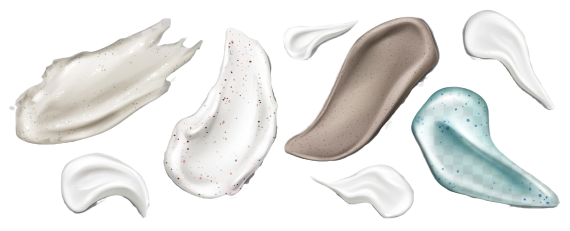- Empty cart.
- Continue Shopping
How to Layer Natural Oils in Your Skincare Routine
How to Layer Natural Oils in Your Skincare Routine
Layering natural oils in your skincare routine can maximize their benefits, ensuring that your skin stays hydrated, nourished, and balanced. Whether you’re using oils for hydration, anti-aging, or calming inflammation, it’s essential to know how to layer them correctly to get the best results. Here’s a step-by-step guide on how to layer natural oils in your skincare routine.
1. Start with Cleansing
- Why It’s Important: Before applying any oils, your skin needs to be clean. Start your routine with a gentle cleanser that suits your skin type. Cleansing removes dirt, oil, and makeup, preparing your skin to absorb the nourishing ingredients from the oils.
- What to Use: If you prefer natural oils for cleansing, use an oil cleanser with ingredients like jojoba oil or grapeseed oil, which help dissolve impurities without stripping the skin of its natural oils.
2. Apply Toner or Hydrating Mist
- Why It’s Important: After cleansing, use a toner or hydrating mist to balance your skin’s pH and provide lightweight hydration. This step preps your skin to better absorb the oils you’ll apply next.
- What to Use: Opt for a gentle, alcohol-free toner or a hydrating mist with ingredients like rose water or aloe vera. These natural ingredients soothe the skin and boost hydration.
3. Use Lightweight Serums First
- Why It’s Important: Serums typically contain potent ingredients like antioxidants, vitamins, and active compounds that target specific skin concerns (e.g., wrinkles, pigmentation). These are often water-based and should be applied before oils because they have smaller molecules that penetrate the skin more easily.
- What to Use: Choose serums with natural ingredients such as vitamin C, hyaluronic acid, or rosehip oil to address concerns like brightening, hydration, or anti-aging.
4. Apply Lighter Oils First
- Why It’s Important: When layering oils, always start with lighter oils and work your way to heavier ones. Lightweight oils penetrate deeper into the skin and deliver hydration without clogging pores. Applying lighter oils first ensures that your skin absorbs the nourishing ingredients more effectively.
- What to Use: Some excellent lightweight oils include jojoba oil, rosehip oil, or squalane oil. These oils hydrate without feeling heavy and work well for most skin types, including sensitive and oily skin.
- How to Use: Warm a few drops of your chosen oil in your palms and gently pat it onto your face, focusing on dry or sensitive areas.
5. Layer Heavier Oils for Deep Nourishment
- Why It’s Important: Once you’ve applied your lighter oils, it’s time to layer on heavier oils that provide deep hydration and nourishment. These oils create a barrier on the skin, locking in moisture and protecting against environmental stressors.
- What to Use: Heavier oils such as argan oil, avocado oil, and marula oil work best in this step. They’re ideal for dry or mature skin types that need extra hydration and support.
- How to Use: Apply 2-3 drops of your heavier oil after the lighter oil has absorbed. Massage it into your skin with upward motions to ensure even distribution and better absorption.
6. Don’t Forget Your Moisturizer
- Why It’s Important: While oils provide excellent hydration, using a moisturizer afterward helps seal in all the benefits from the oils and serums. Moisturizers are designed to lock in moisture and create a protective barrier over the skin.
- What to Use: Choose a natural moisturizer that complements your oils, such as those with shea butter, aloe vera, or glycerin. These ingredients help retain moisture without feeling greasy.
- How to Use: Apply a pea-sized amount of moisturizer over your entire face after the oils have fully absorbed.
7. Apply Sunscreen in the Morning
- Why It’s Important: If you’re layering oils in your morning routine, the final step should always be sunscreen. Sun protection is crucial for preventing damage, even if you’re using oils with antioxidants. Sunscreen shields your skin from harmful UV rays, which can cause premature aging and other skin issues.
- What to Use: Opt for a lightweight, broad-spectrum sunscreen with SPF 30 or higher. Mineral-based sunscreens containing zinc oxide or titanium dioxide are great options for sensitive skin.
- How to Use: Apply sunscreen after all your oils and moisturizer have absorbed. Be sure to reapply throughout the day if you’re outdoors.
Bonus: Customizing Your Routine
- Adjust for Skin Type: If you have oily or acne-prone skin, focus on using lightweight oils like jojoba or grapeseed. For dry or mature skin, you can layer on richer oils like argan or avocado for deeper hydration.
- Use Oils Based on Skin Needs: Tailor your routine to address your skin’s needs. For example, if you want anti-aging benefits, include rosehip or frankincense oil. For calming irritation, try chamomile or lavender oil.
Common Mistakes to Avoid:
- Overusing Oils: Using too much oil can overwhelm your skin and lead to clogged pores. Always apply oils sparingly—2-3 drops are enough for the entire face.
- Skipping Sunscreen: Oils with antioxidants are great for protecting the skin, but they’re not a substitute for sunscreen. Always finish your routine with SPF during the day.
- Mixing Too Many Products: While layering oils can be beneficial, mixing too many active ingredients (like acids and retinoids) can lead to irritation. Stick to a simple, balanced routine that addresses your skin’s specific needs.
Conclusion: How to Layer Natural Oils for Maximum Benefit
Layering natural oils properly in your skincare routine can significantly enhance their benefits, from hydration and nourishment to anti-aging and calming effects. Start with lighter oils and serums, and work your way to heavier oils for maximum absorption and protection. By incorporating these steps into your routine and choosing the right oils for your skin type, you can achieve a glowing, healthy complexion.
Interested in creating your own product line? Explore our private labeling options and bring your brand vision to life. Fill out our Form to get started.
Discover more about our services by visiting our website.

